 W
WAlbert Odyssey is a tactical role-playing video game developed and published by Sunsoft and released for the Super Nintendo Entertainment System in Japan in March 1993. The game features strategy-based combat in addition to traditional role-playing game elements in two-dimensional environments. It is the first game in the Albert Odyssey series, and was followed by two sequels, Albert Odyssey 2: Jashin no Taidou in 1994, and Albert Odyssey: Legend of Eldean in 1996. On June 12, 1996, Albert Odyssey was made available as a full game download on the Satellaview add-on as BS Albert Odyssey , and the original Albert Odyssey was re-released for Satellaview in March 1998.
 W
WDr. Mario is a 1990 action puzzle video game produced by Gunpei Yokoi and designed by Takahiro Harada. Nintendo developed and published the game for the Nintendo Entertainment System and Game Boy consoles. The game's soundtrack was composed by Hirokazu Tanaka.
 W
WDragon Quest, titled Dragon Warrior when initially localized to North America, is the first role-playing video game (RPG) in the Dragon Quest media franchise. It was developed by Chunsoft for the Family Computer and published by Enix in Japan in 1986 as Dragon Quest and by Nintendo in 1989 in North America for the Nintendo Entertainment System. Dragon Quest has been ported and remade for several video game platforms, including the MSX, MSX2, PC-9801, Super Famicom, Game Boy Color, Nintendo 3DS, PlayStation 4, mobile phones, and Nintendo Switch as of 2019. The player controls the hero character who is charged with saving the Kingdom of Alefgard and rescuing its princess from the evil Dragonlord. Dragon Warrior's story became the second part in a trilogy, with several spinoff anime and manga series.
 W
WDragon Slayer: The Legend of Heroes, also known in Japan as Dragon Slayer: Eiyū Densetsu, is a role-playing game developed by Nihon Falcom. It is the sixth game in the Dragon Slayer line of games, and the first in The Legend of Heroes series.
 W
WEarth Defense Force is a 1991 horizontal scrolling shooter video game developed and published by Jaleco. Originally an arcade game, the game was later released for the Super Nintendo Entertainment System as Super Earth Defense Force, dropping the two-player cooperative gaming mode while adding graphics and selectable weapons. The SNES version was released in Japan on October 25, 1991, and in North America in January 1992. The SNES version was eventually released on the Wii Virtual Console in Europe on October 29, 2010, in Japan on January 11, 2011, and in North America on July 14, 2011. It is included in Nintendo Switch SNES Online as of September 5, 2019.
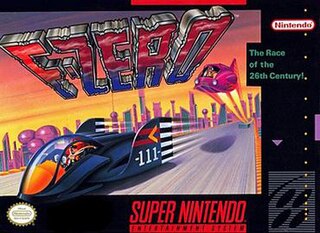 W
WF-Zero is a futuristic racing video game developed by Nintendo EAD and published by Nintendo for the Super Nintendo Entertainment System (SNES). The game was released in Japan on November 21, 1990, in North America in August 1991, and in Europe in 1992. F-Zero is the first game of the F-Zero series, and was a launch title for the SNES. It was emulated for the Virtual Console service on various Nintendo platforms over the years and as part of the Super NES Classic Edition in 2017.
 W
WHarvest Moon is a farm simulation role-playing game developed by Amccus for the Super Nintendo Entertainment System. The game first was released in Japan in 1996, in North America in 1997, and in Europe in 1998. The European version shipped with language localizations for Germany and France. It is the first game in the long-running Story of Seasons series, previously known as the Harvest Moon series in western territories. The game has been re-released on the Satellaview, Nintendo 3DS, Wii, and Wii U.
 W
WIhatovo Monogatari is a 1993 adventure video game that was released exclusively in Japan. A fan translation group released an unofficial English translation patch for the game on December 28, 2018.
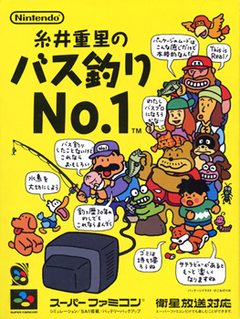 W
WItoi Shigesato no Bass Tsuri No. 1 is a fishing video game developed and released only in Japan for the Super Famicom on February 21, 1997 and updated for broadcast as eight different episodes on the Satellaview subsystem between April and November 1997. On March 31, 2000 the latest version of the game was released for the Nintendo 64 as the Definitive Edition (糸井重里のバス釣りNo.1決定版!). The game allows the player to play as the creator of the game, Shigesato Itoi, and includes a host of animal characters who occasionally appear in the game. The SA-1 was used in the Super Famicom version.
 W
WKaizou Choujin Schbibinman Zero (改造町人シュビビンマン零) is a 1997 game for the Satellaview addon for the Super Famicom. It is a side-scrolling beat-'em-up developed by Masaya and published by NCS. It is the fourth and final game in Kaizō Chōjin Schbibinman series, and the first on the SFC. The previous entries in the series were for the PC-Engine.
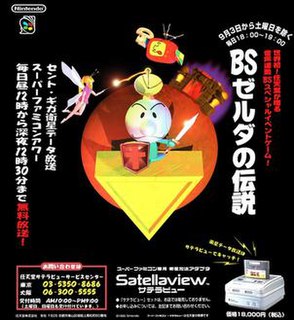 W
WBetween August 6, 1995 and May 30, 1999, Nintendo, in collaboration with St.GIGA, broadcast three different The Legend of Zelda titles to fans for download via the Super Famicom's Satellaview subsystem. BS Zelda no Densetsu, BS Zelda no Densetsu: MAP2, and BS Zelda no Densetsu: Inishie no Sekiban all featured SoundLink narration which was the first time that Nintendo-sponsored Zelda titles made use of voice-actors to provide vocal tracks. As the first SoundLink Game released via Satellaview, BS Zelda no Densetsu in particular was identified by Nintendo as the world's first integrated radio-game. Also broadcast during this time, starting on March 2, 1997, was a non-SoundLink port of The Legend of Zelda: A Link to the Past, known as Zelda no Densetsu: Kamigami no Triforce in Japan. Broadcasts of Kamigami no Triforce continued periodically throughout the tenure of Nintendo's partnership with St.GIGA, after which St.GIGA independently broadcast the game until May 29, 2000.
 W
WLemmings is a puzzle–strategy video game originally developed by DMA Design and published by Psygnosis for the Amiga in 1991 and later ported for numerous other platforms. The game was programmed by Russell Kay, Mike Dailly and David Jones, and was inspired by a simple animation that Dailly created while experimenting with Deluxe Paint.
 W
WLord Monarch (ロードモナーク) is a real-time strategy war game by Nihon Falcom. The game is considered to be part of the Dragon Slayer series. It was originally released in 1991 for the NEC PC-9801, ported 1992 to the Super Famicom and 1994 to the Sega Mega Drive. In 1997, Lord Monarch was remade for Windows as Lord Monarch Online and released for free in both Japanese, and for the first time, English. Lord Monarch is one of the 42 titles included in the Japanese version of the Mega Drive Mini.
 W
WRadical Dreamers: Nusumenai Hōseki is a 1996 text-based adventure video game developed and published by Square for the Satellaview, a satellite peripheral for the Super Famicom. It forms part of the Chrono series, acting as a side story to the 1995 game Chrono Trigger. The game centers around an infiltration carried out by the titular thief gang led by Kid; aided by Serge and Gil, she seeks an artifact called the Frozen Flame and revenge on its keeper Lord Lynx. Players navigate the mansion's environments and impact the story's progression through text choices.
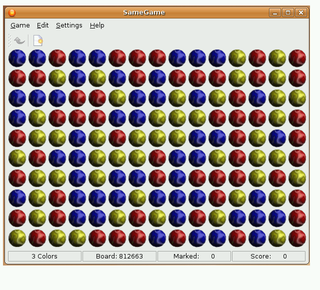 W
WSameGame (さめがめ) is a tile-matching puzzle originally released under the name Chain Shot! in 1985 by Kuniaki Moribe (Morisuke). It has since been ported to numerous computer platforms, handheld devices, and even TiVo, with new versions as of 2016.
 W
WSuper Mario Bros. 2 is a platform video game developed and published by Nintendo for the Nintendo Entertainment System. The game was first released in North America in October 1988, and in the PAL region the following year. The Western release of Super Mario Bros. 2 was based on Yume Kōjō: Doki Doki Panic, a Family Computer Disk System game meant to tie-in with Fuji Television's media technology expo, called Yume Kōjō. The characters, enemies, and themes of the game were meant to reflect the mascots and theme of the festival. After Nintendo of America found the Japanese version of Super Mario Bros. 2 to be too difficult and similar to its predecessor, Yume Kōjō: Doki Doki Panic was modified to become Super Mario Bros. 2 for release outside of Japan.
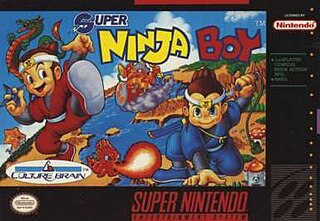 W
WSuper Ninja Boy is an action role-playing game released for the Super NES. It features random encounters with side-scrolling battles, although some boss battles are fought with a traditional menu-based system. There are also a few platforming sections.
 W
WSutte Hakkun is a 1997 action puzzle game featuring a character of the same name developed by Indieszero with Nintendo R&D2 and published by Nintendo for the Super Famicom's add-on, the Satellaview, datacasting on November 2, 1997, and three different updates involving new puzzles were released from 1998 to 1999.
 W
WTrue Golf Classics: Waialae Country Club is a golfing game developed and published by T&E Soft. It was released in 1991 for the Super Nintendo Entertainment System and PC-9800 Series.
 W
WWario's Woods is a 1994 falling tile puzzle video game published by Nintendo for the NES and Super NES. Based on the company's Mario series, players control Toad in his mission to defeat Wario, who has taken control of the Peaceful Woods. Gameplay revolves around clearing each level by using bombs to destroy groups of enemies. The game also features a multiplayer mode that allows two players to compete against each other.
 W
WWizardry V: Heart of the Maelstrom is the fifth scenario in the Wizardry series of role-playing video games. It was published in 1988 by Sir-Tech for the Commodore 64, Apple II, and IBM PC compatibles. A port for the SNES and FM Towns was later developed and published by ASCII Entertainment in Japan. Wizardry V was released in the US for the Super Nintendo Entertainment System by Capcom in 1993, and subsequently re-released for the Satellaview subsystem under the name BS Wizardry 5.
 W
WWizardry VI: Bane of the Cosmic Forge is the 6th title in the Wizardry series of role-playing video games. It was the first in the trilogy surrounding the Dark Savant, which was followed by Wizardry VII: Crusaders of the Dark Savant and Wizardry 8. It was developed by Sir-Tech Software, Inc. and was released on the Amiga and DOS platforms in 1990 by the same company, and for the Super Famicom in Japan in 1995 by ASCII.